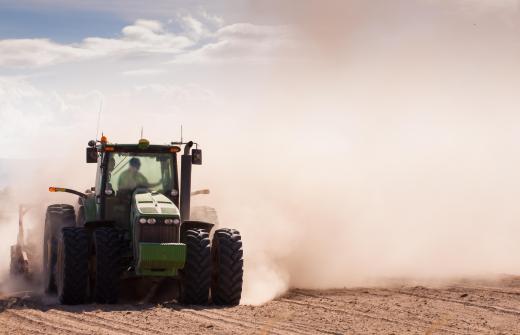A cutter bar is a machine component that either supports blades used for cutting or is itself a blade, depending on how the machine is configured. This part is usually designed to be easy to change so that the blades can be replaced or sharpened as cutter bars see very heavy use. Hardware stores often stock basic cutter bars and can order specialty components. People can also order directly through manufacturers or obtain equipment through service technicians who work with specific types of equipment.
In the case of a support, the cutter bar stabilizes the blades and holds them steady while they are in use. It needs to be strong and flexible, as it may be subjected to very high pressure when the blades are in operation. The cutter bar cannot snap under pressure, but it also cannot be so lightweight that the pressure bends or distorts it. Typically, the component is made from steel and it is attached to the blades with bolts or clip fasteners. The bar also provides a safe component to grip when people are changing or removing the blades.

On equipment like harvesters, the cutter bar is itself the blade. These cutter bars are usually made using two bars fitted with triangular teeth. When the device is turned on, the blades move parallel to each other, trapping the crop being cut between the blades and shearing it off. Cutter bars need to be regularly oiled and sharpened so they will resist rusting and cut crops smoothly, without mashing or mangling the bases of the stems. Harvesters also have equipment that can be used for other stages of the crop harvesting process.
Different cutter bars are rated for varying applications. Bars designed for agricultural use are designed differently than bars that slice through wood, metal, and plastics. It is important to select a component that is a good fit with a machine and is designed to cut the material that will be passing through the machine. A weak cutter bar or blades not rated for a given application can fail, sometimes catastrophically, putting the machine operator at risk of injury.
Maintenance of the machine as a whole is also important for cutter bar safety. Machine operators are usually in charge of inspecting and caring for their own equipment, sometimes with the use of checklists and logs to help them track necessary maintenance. Companies can also hire technicians to service specialty equipment.
Ever since she began contributing to the site several years ago, Mary has embraced the exciting challenge of being a About Mechanics researcher and writer. Mary has a liberal arts degree from Goddard College and spends her free time reading, cooking, and exploring the great outdoors.

